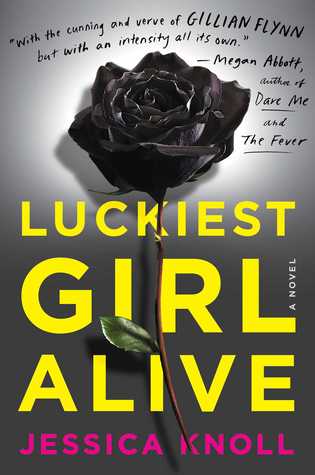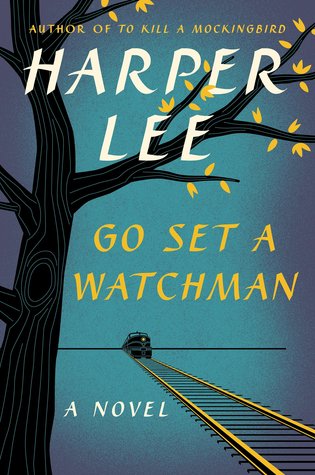 First, my heartiest apologies for the long absence – fall at work and school has proven busier than expected. Not that I haven’t been reading, but my writing time has been limited.
First, my heartiest apologies for the long absence – fall at work and school has proven busier than expected. Not that I haven’t been reading, but my writing time has been limited.
Alex Marshall, purportedly the pseudonym for a well-known author of other genres, makes his high fantasy debut with A Crown for Cold Silver. As if the critical accolades weren’t enough, the way the title rolls off the tongue built up the intrigue as did the ferocious cover, a perfect depiction of the bloody struggle for empire narrated in the book.
Feared conqueror Cobalt Zosia and her Five Villains tore and remade the Crimson Empire, until the Queen was stricken down and her mercenary army scattered. Presumed dead for twenty years, Zosia’s peaceful life is disrupted by the assassination of her husband and the massacre of her village. Vowing vengeance, she sets out to reconnect with old allies, discovering that loyalty is not what it once was, nor are her enemies the same.
That summary only captures part of Marshall’s sprawling story, which follows numerous characters across 600-odd pages. Unfortunately though, that’s a little too much reach, as the parts of Zosia’s past are more compelling a tale than the present. Her life has faded into legend, and it’s an interesting contrast to see how such a larger-than-life figure has aged. You don’t get a lot of fantasies with the protagonist in their fifties, as she and her villains are, and they still steal the show, unfortunately for the other characters.
Princess General Ji-hyeon, who is impersonating Zosia for her own glory, is a pale copy of the original, and her love triangle with the bland horned wolf Sullen and priggish Virtue Guard Keun-ju is nothing short of boring. Same with Sister Portales, a conflicted devil-ridden witchnun whose struggles with sinfulness are tedious at best. How can they compare to Villains like Singh with her martial skills and mighty mustache or Hoartrap’s uncanny wizardry and twisted humor?
Poorly, that’s how. I will admit that I admire the diversity found in the characters – I’ve never read a book so nonchalant about gender identity and sexuality. Males have arranged marriages to other men and spawn children. Multiple characters are open to bisexuality, and a few are happily androgynous. All of this is blatantly acceptable as is the crassness and debauchery you would expect from hardened soldiers. They flirt, they drink, they smoke – more attention is paid to this very human behavior than to the politicking and military strategy.
In fact, that’s another thing I didn’t like. Marshall often told rather than showed. Zosia narrates what her plans are, but we don’t get to see them unfold. We hear she’s a great tactician, but we don’t directly hear her and Ji-hyeon plotting war strategy. Hoartrap, Colonel Hjortt, Wan – all these men come across as cartoon caricature bad guys because they spend time declaiming their plots to their captives.
Meanwhile, we learn about all this intrigue, but other parts of this world are left unexplained. This is practically the only fantasy I’ve read that doesn’t include a map, so I’m boggled at the scope of the Crimson Empire from the Immaculates to the Chain. We know little to nothing about how devils work, which is acceptable because neither do most characters, but unacceptable when the horned wolves or the wildborn are thrown in without explanation about how they’re related to devilry. (If you didn’t understand this paragraph, don’t worry, because I don’t either even after finishing the book.)
So I concluded with mixed feelings. A Crown for Cold Silver is certainly unique, but between the length and my general confusion/boredom, I don’t think I’ll be picking up the sequel.
3,5 Stars

 I must confess that I am slightly obsessed with Vladimir Putin. Not in the hero-worshiping way of many Russians (and some Americans!) but because he is one of the most unbelievable global figures today. From
I must confess that I am slightly obsessed with Vladimir Putin. Not in the hero-worshiping way of many Russians (and some Americans!) but because he is one of the most unbelievable global figures today. From  I was one of the odd few who hated Gillian Flynn’s Gone Girl. Naturally I was less than thrilled that my book club picked Dark Places for it’s October read, and so I didn’t even attend. However, the urge to read something in theme with my favorite holiday plus the encouragement of friends who claimed that I’d probably like it more, finally convinced me to read it.
I was one of the odd few who hated Gillian Flynn’s Gone Girl. Naturally I was less than thrilled that my book club picked Dark Places for it’s October read, and so I didn’t even attend. However, the urge to read something in theme with my favorite holiday plus the encouragement of friends who claimed that I’d probably like it more, finally convinced me to read it. First, my heartiest apologies for the long absence – fall at work and school has proven busier than expected. Not that I haven’t been reading, but my writing time has been limited.
First, my heartiest apologies for the long absence – fall at work and school has proven busier than expected. Not that I haven’t been reading, but my writing time has been limited. I don’t usually find things funny that normal people do. For example, I like Tina Fey well enough but well before the point of obsessive. Will Ferrell has made maybe two movies I’ll chuckle along to, and I can’t stand Chelsea Handler. Somehow though, Aziz Ansari cracked through my humorless shell and legitimately cracks me up.
I don’t usually find things funny that normal people do. For example, I like Tina Fey well enough but well before the point of obsessive. Will Ferrell has made maybe two movies I’ll chuckle along to, and I can’t stand Chelsea Handler. Somehow though, Aziz Ansari cracked through my humorless shell and legitimately cracks me up. I’m sick of things being labeled “the next Gone Girl.” Maybe because I didn’t love Gone Girl (I know, blasphemy, right?) or maybe because of half of the books with that label are absolutely nothing like it. Like Jessica Knoll’s Luckiest Girl Alive.
I’m sick of things being labeled “the next Gone Girl.” Maybe because I didn’t love Gone Girl (I know, blasphemy, right?) or maybe because of half of the books with that label are absolutely nothing like it. Like Jessica Knoll’s Luckiest Girl Alive. Guys, go out and read Go Set A Watchman.
Guys, go out and read Go Set A Watchman. So sorry for the lack of updates over the last few weeks! I was taking an extended summer vacay (and reading plenty of new books) so there should be many reviews ahead of us 🙂
So sorry for the lack of updates over the last few weeks! I was taking an extended summer vacay (and reading plenty of new books) so there should be many reviews ahead of us 🙂 1992, Laos – A remote team of scientists stumble across an unusual pair of horns on the wall of a village hut. Excitedly interrogating the residents, they confirm the discovery of a new species of animal, the first large land mammal discovered in fifty years – the saola.
1992, Laos – A remote team of scientists stumble across an unusual pair of horns on the wall of a village hut. Excitedly interrogating the residents, they confirm the discovery of a new species of animal, the first large land mammal discovered in fifty years – the saola. Rachel Hartman’s Seraphina was one of the best books I’d read in 2013, well before I started this blog, and one of my favorite fantasy books of all time. Seraphina proved to be a bold and intelligent, yet relatably vulnerable heroine – so very human despite her hidden part-dragon nature. Her supporting cast, from the menagerie of “grotesques” to the swoon-worthy Kiggs to the charming Princess Glisselda, were all equally compelling as was the surprising villain. And the dragons are like no other dragons in print. This book had it all – politics, art, religion, all wrapped up in strong writing that ended with me begging for more.
Rachel Hartman’s Seraphina was one of the best books I’d read in 2013, well before I started this blog, and one of my favorite fantasy books of all time. Seraphina proved to be a bold and intelligent, yet relatably vulnerable heroine – so very human despite her hidden part-dragon nature. Her supporting cast, from the menagerie of “grotesques” to the swoon-worthy Kiggs to the charming Princess Glisselda, were all equally compelling as was the surprising villain. And the dragons are like no other dragons in print. This book had it all – politics, art, religion, all wrapped up in strong writing that ended with me begging for more. So I obviously picked up Shadow Scale as soon as I could get my hands on a copy from the library. In the sequel, Seraphina has exposed herself as half human, half dragon and must search for more of her kind to halt the deadly war between dragons and humans. I was thrilled to widen the world she inhabits, especially as Hartman increased the character diversity and was respectful of race and sexuality, but sadly many of my favorite parts of the first book were shafted. We barely glimpse Kiggs and Glisselda, and the resolution to their love triangle was frustrating. Most of the book follows Seraphina slowly meandering to find her kind, but there’s too many found to keep track of or develop well. The villain of this piece is disappointing, and is vanquished in an even more dispiriting deus ex machina. Worst of all, Seraphina lacked her character spark and agency – she doesn’t play music or hunt down murderers, she just sulks and twiddles her thumbs for 2/3rds of this lengthy volume.
So I obviously picked up Shadow Scale as soon as I could get my hands on a copy from the library. In the sequel, Seraphina has exposed herself as half human, half dragon and must search for more of her kind to halt the deadly war between dragons and humans. I was thrilled to widen the world she inhabits, especially as Hartman increased the character diversity and was respectful of race and sexuality, but sadly many of my favorite parts of the first book were shafted. We barely glimpse Kiggs and Glisselda, and the resolution to their love triangle was frustrating. Most of the book follows Seraphina slowly meandering to find her kind, but there’s too many found to keep track of or develop well. The villain of this piece is disappointing, and is vanquished in an even more dispiriting deus ex machina. Worst of all, Seraphina lacked her character spark and agency – she doesn’t play music or hunt down murderers, she just sulks and twiddles her thumbs for 2/3rds of this lengthy volume.